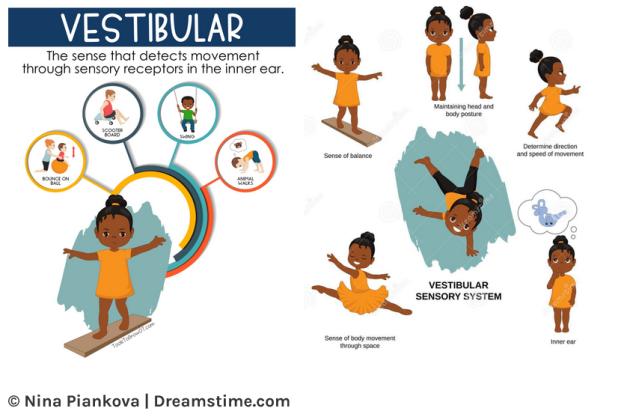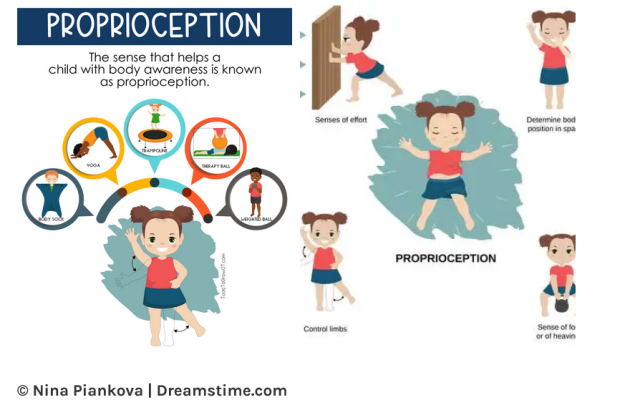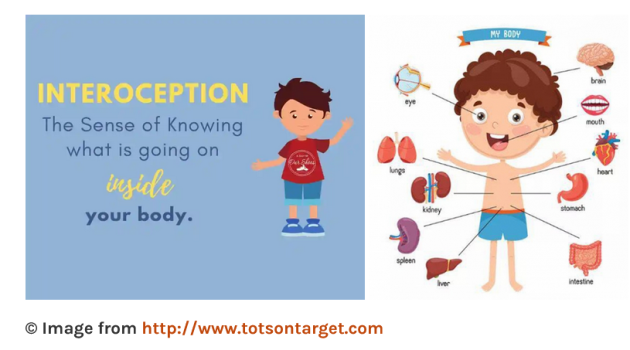We have at least three ‘mystery’ senses that we might not know so much about, including vestibular proprioception, and interoception.
![Photo: [link]Etienne Girardet[/link], Unsplash CC0.](https://cms.evangelicalfocus.com/upload/imagenes/67b8894813429_etiennegirardet940.jpg) Photo: [link]Etienne Girardet[/link], Unsplash CC0.
Photo: [link]Etienne Girardet[/link], Unsplash CC0.
We have at least eight senses; five that we can all think of, sight, hearing, smell, taste and touch, as well as at least three ‘mystery’ senses that we might not know so much about, including vestibular (balance and movement), proprioception (body awareness), and interoception (awareness of what’s happening inside the body).
This article explores these three ‘mystery’ senses in a bit more detail, and provides us with practical ways to learn about them with our own children, or with children we care for in a club or group, as well as thinking about what Jesus did that is relevant here.
We can understand more about our most well-known five senses in a previous article here
We also have an article about Sensory Processing Differences (SPD) here
But for this article, let’s explore three of our ‘mystery’ sense:
One of our senses is our ‘vestibular’ sense, or our sense of balance and movement. It helps us to know what way up we are, whether we are moving or still, how to experience gravity, how to maintain a position without falling.
Each of us has vestibular organs situated deep within our ears and when we move our heads the fluid in these organs moves too, providing us with information about the position of our heads and bodies.
Our vestibular sense works alongside many of our other senses including proprioception (see below), sight, hearing etc. to help us feel more confident about moving in, and interacting with, our environment.
Some people can have under responsive (hyposensitive), or overly responsive (hypersensitive), vestibular systems which can mean, for example, that they either need to move constantly to get the sensory input that they need or can be fearful of movement as they feel unbalanced and might fall.
A child or young person with an under responsive vestibular system might constantly fidget, rock in their chair, or need to spin, hang upside down, or move around rather than sitting still.
A child with an overly responsive vestibular system might be unwilling to take part in physical games, or to climb, or be wrongly labelled as ‘lazy’.
They are also more likely to get travel sick. Understanding these aspects of our vestibular system can help us to understand and accommodate the needs of a child or young person with an under or overly responsive vestibular system, allowing us to put strategies in place to support them.
Don’t dismiss a child with an under responsive vestibular system as naughty, they have an inner need to move, so provide that means for them. They might find it easier to sit (and bounce) on an exercise ball rather than on a chair, or to sit on a wobble cushion, or to stand on a balance board.
Likewise, include a child with an overly responsive vestibular system who might prefer to sit still and be the referee or scorer in a hectic physical game.

What did Jesus do?
Remember when Jesus and the disciples were in the boat when the storm came up? (Mark 4:35-41) The boat was being tossed around everywhere and the vestibular systems of everyone on board would have been struggling!
Jesus rebuked the wind and the waves and said “Be still!” and there was calm. Sometimes we may need to help children and young people who are struggling with their vestibular systems to be still, while in other cases we may need to help them to move.
Another of our senses is our ‘proprioceptive’ sense, or our sense or ‘awareness’ of our body’s position in our environment or space.
It is the way that the receptors in our muscles and joints send messages to our brains to help us understand about our bodies positioning, movement, coordination etc.
It helps us to focus our movement appropriately, for example knowing that we need to apply more force when lifting a box of paper than we do when picking up a single sheet. It helps us know where our nose is if we try to touch it even with our eyes closed!
Our proprioceptive sense works alongside many of our other senses including vestibular (see above), sight, touch, etc. to help us to feel more confident about moving in, and interacting with, our environment.
Whenever we go upstairs, carry something, stand up, sit down, bend over or stretch, we are using our proprioceptive system.
A correctly functioning proprioceptive system allows a child or young person to, for example, write with a pencil without breaking it, or to play in a coordinated and balanced way, not being too rough or too gentle.
If a child or young person’s proprioceptive system isn’t functioning as it should, they may seek additional input to their muscles and joints to help them to regulate themselves, or may actively avoid this.
Proprioceptive seeking behaviours might be through rough play, or through jumping, stamping or even running into walls.
Another term to describe them can be the ‘Bumpers’ and ‘Crashers’ as they seek to give themselves that additional input. This might also include kicking, biting or hitting out at others, chewing non-food items etc.
Proprioceptive avoiding behaviours might include avoiding physical activities like running, jumping or climbing, preferring sitting still, avoiding touch, and being a picky eater.
Even though these two groups of children might seem to be total opposites, they both need proprioceptive input to help them to either ‘calm’ or ‘wake up’ their system and reach their ‘optimum’ level of functioning, i.e. the level they work best at.
Understanding these aspects of our proprioceptive system can help us to understand and accommodate the needs of a child or young person with an unbalanced proprioceptive system, allowing us to put strategies in place to support them.
For example, providing a range of physical activities through ‘activity breaks’ that meet the needs of all the children such as through movement, applying pressure, stretches, walks, or even just some playdough to squeeze, can make a big difference.
You can do this subtly by including ‘opportunities to serve’ into a programme; going on a litter pick, helping some elderly people with their gardens, doing some shopping etc. all can have positive proprioceptive properties.

What did Jesus do?
Jesus was always on the move; we often see a story about Jesus that starts with him travelling to or from somewhere, and all of these journeys would have been by foot.
One example is when Jesus and his followers were on the way back from Jericho and they encountered Bartimaeus (Mark 10:46-52).
Jesus usually took the disciples with him, so they would have had lots of proprioceptive input too from the walk, from carrying things with them, from the jostling of the crowd!
We can learn from his example, and not always just sit in our churches when we meet with the children or young people… take them on a walk!
One of our senses is our ‘interoceptive’ sense, or our sense of internal ‘feelings’. Receptors in our muscles and joints tell us where our body parts are, that’s the basis for our proprioceptive sense (see above).
Interoception is a similar concept; just as there are receptors in our muscles and joints there are also receptors inside our organs, including our skin. These receptors send information about the inside of our body to our brain.
This information helps the brain to regulate our vital functions such as body temperature, hunger, thirst, digestion, and heart rate.
Interoception helps us to understand and feel what is going on inside our bodies; for example we need to know if our heart is beating fast or if we need to breathe more deeply, and we are able to tell if we need to go to the toilet, or if we are hungry, full, hot, cold, thirsty, feeling sick, itchy, or ticklish.
If a child or young person’s interoceptive system isn’t functioning as it should, they may be unaware that they need the toilet until it is too late, or may keep eating beyond the point of being full.
They may be putting their coat on when everyone else is sweltering, or be wandering around in a t-shirt in the middle of winter.
There is some correlation between our interoceptive sense and our emotions too… how we ‘feel’ is more than just about our physical state.
We have sometimes unexplainable feelings about places, or people, or certain situations, that can be positive or negative; it is possible that these feelings are linked to our interoceptive system too.
For example, when we experience danger, our heart rate increases, our breathing shallows, our muscles tense; not recognising these changes may cause us not to be fearful, putting us at greater risk of harm.
There may also be a link between our interoceptive systems and the sense of peace that our faith can bring us.
Helping children and young people to regulate their interoceptive system might be as simple as reminding them to visit the toilet, or helping them to manage how much they eat or drink, or checking that they are dressed appropriately.
Even just giving them a snack mid-morning, for example, can help children to focus. But it might also be about being sensitive to how they respond to people, places, and situations; sharpening our own awareness of these things so that we can support them better.
By helping them to be comfortable and secure in this way, we help them to be more receptive and open to hearing about and experiencing God because then nothing else can get in the way.

What did Jesus do?
Jesus experienced all of the interoceptive feelings that any of us can; he experienced hunger as he fasted in the wilderness (Matthew 4:1-4), he experienced thirst on the cross (John 19:28), he experienced strong emotions in the Garden of Gethsemane (Luke 22:44).
There is no feeling that we can experience that Jesus hasn’t himself experienced; he understands everything that we can feel, and more, and longs to help and support us as we experience these feelings too.
So, I hope you’ve found it interesting to explore three of our ‘mystery’ senses, understanding them, yourself, and others better, while appreciating what Jesus teaches us about them and though them too.
Mark Arnold, Director of Additional Needs Ministry at Urban Saints. Arnold blogs at The Additional Needs Blogfather. This article was re-published with permission.

Las opiniones vertidas por nuestros colaboradores se realizan a nivel personal, pudiendo coincidir o no con la postura de la dirección de Protestante Digital.
Si quieres comentar o